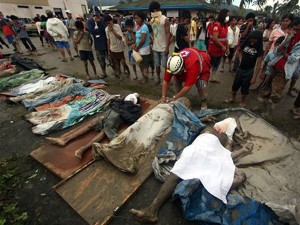
Pablo was also one of the most devastating typhoons last year, with damage totalling some $1 billion, said Impact Forecasting in its December report on global catastrophes in 2012, “Global Catastrophe Recap.”
The report said that damage from Pablo—internationally known as “Bopha,” which Impact Forecasting classified as a super typhoon—paled only in comparison to various severe weather events in the United States, earthquakes in Italy, drought in Russia, and several floods in China and Australia.
The most destructive catastrophe in 2012 was Hurricane “Sandy” which ravaged the US East Coast, the damage from which was estimated at $62 billion.
Sandy also wreaked havoc in the Caribbean and the Bahamas as well as Canada, with additional damage estimated at $2.5 billion.
Pablo made landfall in Mindanao as a 260 kilometer-per-hour Category 5 typhoon and left 1,901 people dead or missing and 2,666 injured, the report said.
More than 216,817 homes were damaged or destroyed in 318 municipalities in 34 provinces, with the provinces of Davao Oriental and Compostela Valley sustaining the most extensive damage, it said.
Impact Forecasting noted that Pablo destroyed P37 billion, or $802 million worth of agricultural resources, infrastructure and private property. It said P5 billion ($122 million) would be needed to rehabilitate the farms.
In Palau, Bopha caused an additional $20 million in damage, the think tank said.
“Insurance and reinsurance penetration in the affected territories (in Southeast Asia and South Pacific) is significantly lower than in the more mature Western markets, so the impact of a weather system such as super typhoon Bopha on the Philippines places an even greater strain on regional recovery efforts and the availability of sufficient government aid,” Impact Forecasting president Steve Jakubowski said in a statement.